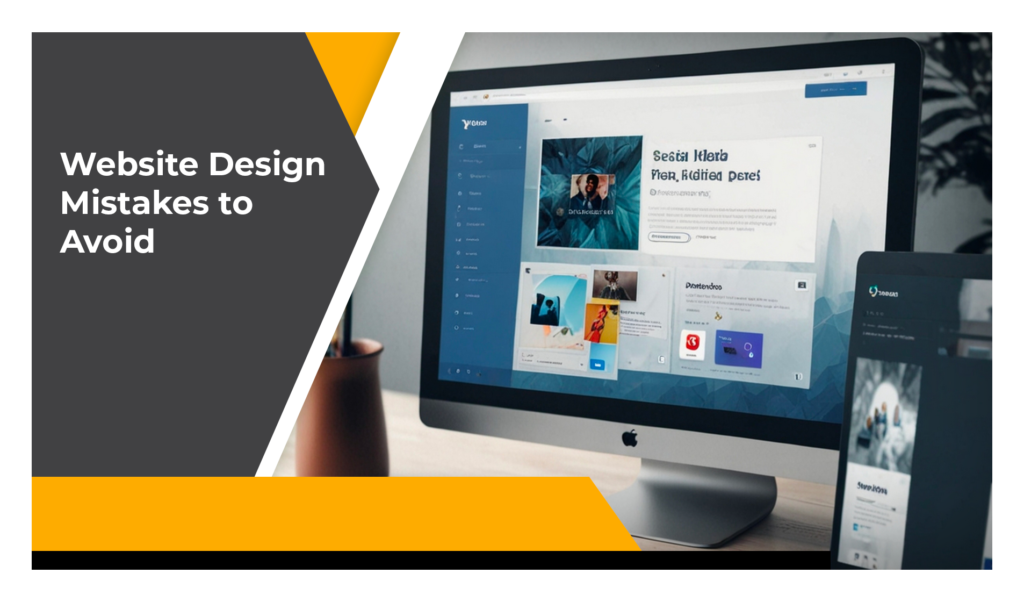
Website Design Mistakes to Avoid
Are you looking at creating a website? This blog explores what factors to consider and what factors to avoid when creating a website so that you get the best results. Website design mistakes can lead to poor user experience, lower ranking in search results and, lost business opportunities. While you try to build a successful online presence it is important to understand these mistakes and how to avoid them.
Not Prioritizing Accessibility
Designers tend to make one elementary website design mistakes that is not prioritizing its accessibility. A website must be usable by everyone, including for people who are differently abled. This means incorporating features like alternative text for images, keyboard navigation, and screen reader compatibility. If you fail to do so then it might drive away a portion of your audience and result in legal consequences in some regions.
Prioritizing accessibility enables all users to easily access and navigate your website. It also demonstrates your commitment to inclusivity, which can enhance your brand’s reputation.
Forgetting the Importance of Responsive Design
Today people prefer using mobiles for various tasks, thus forgetting the importance of responsive design is a significant misstep. With the increasing use of smartphones and tablets to browse the internet, your website must adapt to different screen sizes and resolutions. If you do not have a responsive website then your visitors will have poor user experience on smartphones, resulting in higher bounce rates and lower search engine rankings. If you ensure responsive website designs then your website will look and function as desired on any device – a desktop computer, a tablet, or a smartphone. If you adapt these elements in your design you surely will reach a broad audience helping you to keep visitors engaged on your website.
Not Investing in Customization
Using generic templates without customization is another common website design mistake. Templates are a quick and cost-effective way to build a website. These templates often need more uniqueness and functionality than your business may require. If you do not invest in customizations your website might not look original and will fail to meet your specified goals.
Customization allows you to personalize your website reflecting your brand identity and providing your customers’ desired features. Customizing templates helps you create a website that differentiates your brand from your competition, thus offering a more personalized user experience.
Using Features That Don’t Convert
Incorporating too many bells and whistles on your website might seem like a good idea, but using features that don’t convert can clutter your site and distract users from your core message. Features like autoplay videos, excessive pop-ups, or overly complex animations can frustrate users and drive them away.
When designing your website, focus on features that enhance user experience and drive conversions. Whichever element you decide to add on your website should serve a specific purpose. It might be to guide users toward making a purchase, making them sign up for a newsletter, or as simple as enabling them to contact you.
Having a Lack of Hierarchy
A lack of hierarchy in website design might confuse visitors making it difficult for them to find the information they are searching for. Visual hierarchy helps you arrange various elements on a page that guides the viewer’s to the most important information first. Users may struggle to navigate your site without a clear hierarchy, leading to a frustrating experience.
Establishing a strong visual hierarchy involves using size, color, contrast, and spacing to emphasize key elements like headlines, calls to action, and navigation menus. A well-structured hierarchy helps users quickly understand the purpose of each page and encourages them to explore further.
Having Unclear Navigation
Unclear navigation is a major website design mistake that can lead to user frustration and high bounce rates. Make your website’s navigation as intuitive and easy to use as possible. It will allow visitors to find what they are looking for without confusion. If users find it hard to navigate your website, they will leave and seek out a competitor’s website that offers a better experience.
To avoid this mistake, ensure that your navigation menu is clearly labeled, logically organized, and accessible from any page on your site. Consider using breadcrumbs, search functionality, and a sitemap to enhance usability further.
Not Effectively Communicating Your Business Purpose
A website that fails to communicate its business purpose clearly will leave visitors confused and unsure of what action to take. Not effectively communicating your business purpose is a common mistake that can diminish the impact of your online presence. Your website should immediately convey who you are, what you do, and why it matters to your audience.
To avoid this mistake, make sure that your homepage prominently features a clear and concise value proposition. Use headlines, images, and calls to action that aligns with your brand messaging and guides users toward the next steps.
If you avoid these website design mistakes while building a website then you will surely have a website that looks great and performs well. By prioritizing accessibility, ensuring responsive design, investing in customization, focusing on conversion-driving features, establishing a strong hierarchy, and providing clear navigation, you can build a website that effectively communicates your business purpose and engages your audience.
At Passion Minds, we specialize in helping clients build great website designs that are visually appealing, user-friendly, and customized to meet their objectives. Our team works closely with clients, avoiding these common design mistakes and creating a website that stands out in today’s competitive digital landscape.

